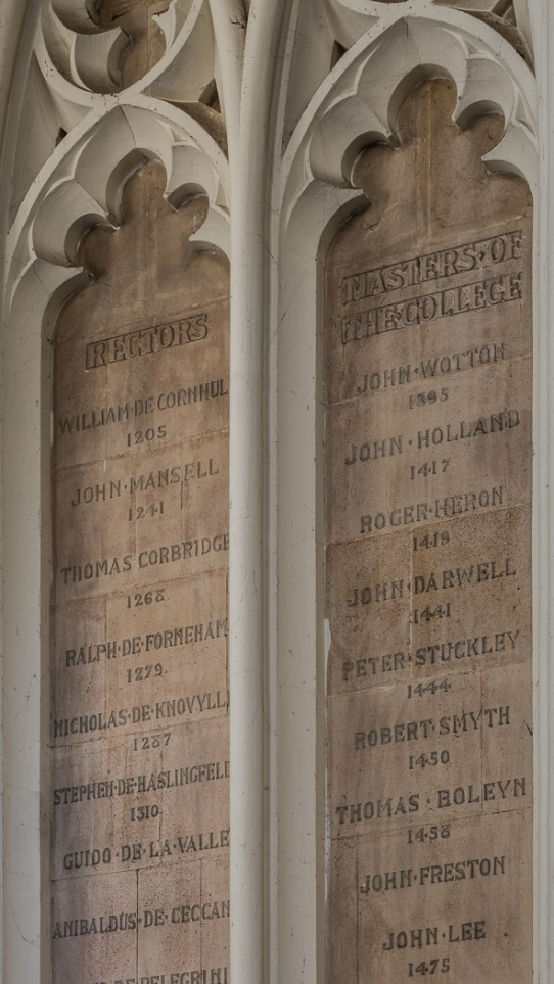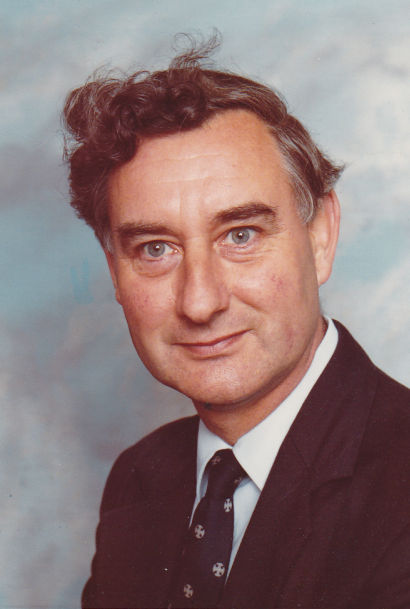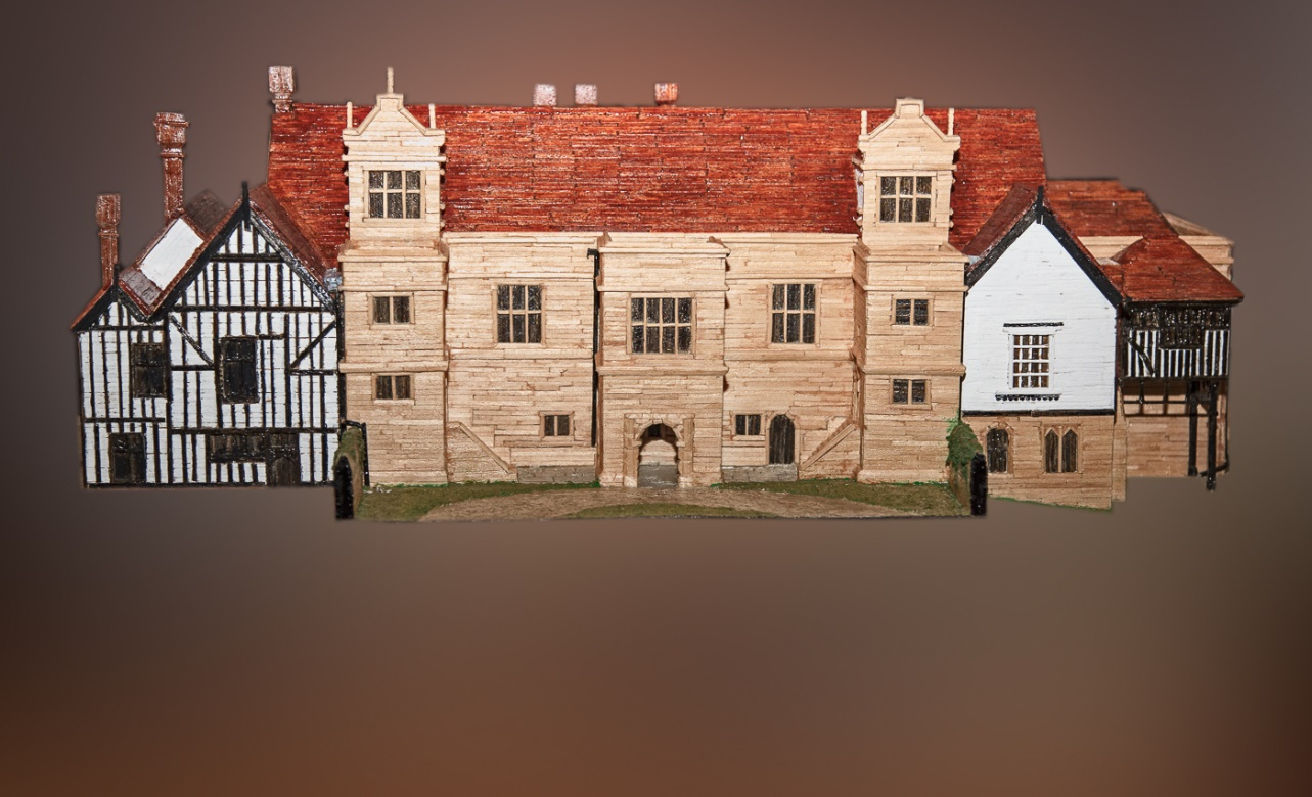
All Saints Heritage Trail
The door on the left leads into the Vestry, which was a later addition to the Church. The Vestry contains the Parish Registers which date back to 1542 and which record births, marriages and burials. It is probable that very few churches in England can produce registers of an earlier date, or more regularly kept. They date back to within six years of the time Henry VIII decided that every parish church should have a register book and a parish chest to keep it in. Those researching their family history may view these registers by appointment.
Above the vestry door are listed the names of Clergy who have been connected with this Church, whether as Rectors, Masters, Curates or Vicars. The first name on the list is:
1205 William de Cornhull Rector
The first Master of the College is:
1395 John Wotton D.D

Lists of clergy
The Organ
On the left side will be seen the chamber containing the pipes of the organ. The first organ in All Saints was built in 1747 and stood in a gallery at the West end of the Church. The present organ has grown from an instrument first built in 1880 by T C Lewis and restored and extended by Wood Brown Ltd in 1980. It is a large instrument with 5 “departments” - Great, Swell, Choir, Positive and Pedal played from a distant console of 3 manuals and a pedal board. The Positive Section, added in 1980, is located on a shelf outside the main organ chamber behind the Altar in St Katherine’s Chapel.

Pipes of the main organ
Until 2007, the organ console was opposite the organ chamber. In that year the console was installed on a moveable platform and moved near to the pulpit. It is connected to the organ pipes by a computer cable. This arrangement increases visibility for the organist during services, whilst for organ recitals the console is moved to the centre of the Nave so that the audience has a much better view of the organist in action.
The Models
Opposite the organ, in three glass cases, are models of the Archbishops' Palace, the Master’s House and All Saints Church which were made from matchsticks to a scale of 1:75 by Mr Brian Cannell who was, for many years, Head of Art at a local secondary school. Brian, who was an authority on the history of All Saints Church, died in 2012.

Brian Cannell 1936 - 2012
|
Model of the Archway and College |
Model of All Saints Church |
|
Model of All Saints Church |
 Model of The Archbishops' Palace |
We now walk down the steps into the Nave and St Catherine’s Chapel